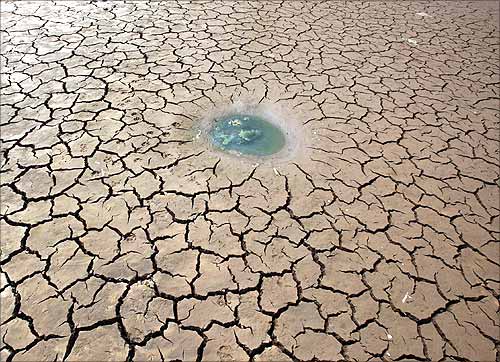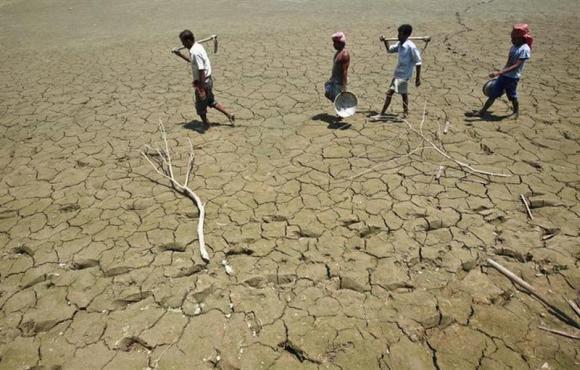Photographs: Reuben NV/Rediff Rajesh Bhayani in Mumbai
Worries of an El Nino effect this monsoon are an added complication for the Reserve Bank’s task of managing of inflation.
Arising from a weather change in the Pacific Ocean every few years, the effect of an El Nino on this part of the world is to hit the average rainfall, triggering problems in grain output.
A private sector weather forecaster, Skymet, and some global forecasters have already issued warnings for this year that this could happen.
. . .
Why El Nino worries inflation managers
Image: Smoke billowing out from the Wallow Wildfire surround trees in Eagar, Arizona.Photographs: Iain Williams/Reuters
RBI has decided to consider inflation based on the new series of the Consumer Price Index, where the weight of agricultural crops is around 40 per cent.
Any possibility of crop damage will mean a spike in commodity prices and resulting spurt in food inflation.
Skymet says there’s a 25 per cent chance of India facing a drought this year, due to the El Nino effect.
Indranil Sen Gupta, India economist at DSP Merrill Lynch, agrees there is such a risk this year.
The government weather forecasting agency, India Meteorological Department, is expected to announce its forecasts in a day or two.
. . .
Why El Nino worries inflation managers
Image: A view of a partially dried-up pond at a village of Guangnan county, China.Photographs: Reuters
According to the Skymet analysis, the gravity of impact in north-west and west India could be higher than in earlier El Nino years.
Sugarcane, oilseeds and milk are some of the big products in these regions.
The Dhanya Index of the National Commodities and Derivatives Exchange has risen 2.6 per cent in the past fortnight since the initial forecasts of an El Nino started coming.
Rice and maize are major kharif crops in the cereals (dhanya) segment.
The prices of pulses have been lower due to a huge crop but the comfort might not last for long, as it is import-dependent and Australia, one of the biggest suppliers, has warned it faces an El Nino threat.
. . .
Why El Nino worries inflation managers
Image: Smoke rises from chimneys of a thermal power plant near Shanghai March 26, 2014.Photographs: Reuters
Rice, our largest agri-export, wouldn’t remain unaffected if rain is less or even delayed.
Jatin Singh, founder and chief executive officer of Skymet, said, “We are expecting a deficit rainfall in many subdivisions in northwest and west-central India.
“This is means moisture distress in parts of Rajasthan, MP, Maharashtra and especially Gujarat, which could lower milk production significantly.
“Any delay in the monsoon advance after June 10 could cause soyabean prices to spiral, as sowing will get delayed. This year, we think both east and west MP are vulnerable.”
. . .
Why El Nino worries inflation managers
Image: Labourers walk through a parched land of a dried lake on the outskirts of Agartala, capital of Tripura.Photographs: Jayanta Dey/Reuters
This might also happen for groundnut, a major crop for Gujarat.
Vegetables, in any case, always are prey to monsoon vagaries.
As for sugarcane, Singh says, “UP cane is irrigated and won’t have that much of an adverse impact.
“But we are expecting below normal rainfall in parts of Maharashtra and north interior Karnataka.
“In 2009 (a drought year) and 2012 (a deficit year), sugar prices spiked by 15-20 per cent. This year could be similar.”
. . .







article